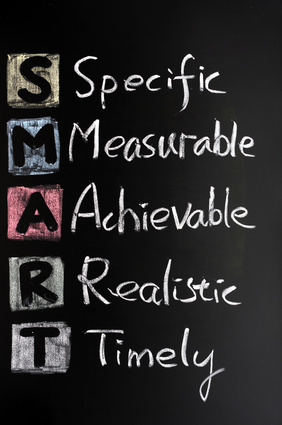Considering and defining the main goal of your website is one of the most important tasks of site-building. Before you start thinking about color schemes or copywriting, you should first work out what you hope to achieve by creating a site.
Think of your favorite websites. Sites you consider to be “good” are likely ones that have been well thought out with clearly defined goals.
Why are website goals important?
Before we delve into how to craft website goals, let’s first understand why they are important to have in the first place. Goals can help you work out a number of important things including:
- Target audience – Defining goals for your site helps you determine exactly who your target audience is, what their challenges are, and what they deem important.
- Crafting effective content – Knowing more about your target audience will help you to develop online personas, allowing you to create effective content that speaks directly to your audience.
- Website organization – Once you know the main goals of your site, you can effectively organize and prioritize content, thus guiding visitors where you want them to go in order to achieve these goals.
- Success measurement – Clearly defined goals help you to understand how effective your site actually is. Once defined, you can measure whether your site has met, surpassed or underachieved on its goals.
A good place to start when determining the goals of your website is the goal for your business overall. Your website goals should be an extension of the goals you’ve set for your business as a whole. If a business is purely online, then the business and website goals will be quite similar.
How to create effective website goals
Website goals will vary considerably from site to site, in the same way that overall business goals vary from business to business. To give an example, an online seller and an interior designer will have very different website goals. Online retailers are likely to center around driving sales via website, whereas the goal of an interior designer might focus more on showcasing their work and generating leads. That being said, the process used in order to define goals should be the same – they should both use the S.M.A.R.T model.
S.M.A.R.T is a mnemonic for: Specific, Measurable, Attainable, Relevant and Time-bound.

Let’s look at each of these in more detail:
Specific – An effective website goal should specifically state what you are hoping to accomplish. A goal shouldn’t be to simply “increase sales.” If the goal is to do this, it should be specific and detail by how much, such as increasing sales by 10%.
Measurable – In order to know whether a goal has been achieved, it has to be measurable. This could be knowing the revenue generated through your website or the number of people that visited the site. Website analytics will help you measure your site’s success and can help you to put numbers around your goal.
Attainable – An effective goal should be attainable and realistic – one you have a chance of achieving. Although being ambitious and having something to work toward is good, setting a goal that is unachievable is meaningless.
Relevant – Goals should be relevant to the overall objective of the business. As mentioned, website goals should be influenced heavily by and should help to achieve the goals of the business as a whole.
Time-bound – Making a date when you would like the goal achieved by, helps to focus your efforts on an end point, giving something to work toward. Again, the timeframe should be realistic as well as measurable and attainable.
If we take the online retailer from the example above, by using the S.M.A.R.T. model, the goal could change from: “I would like to increase sales for new products,” to: “I would like to increase the sales of products X, Y, and Z by 25% over the next 3 months.” Likewise the interior designer’s goal could go from: “I would like to create awareness about the services I offer and generate leads” to: “I would like to increase the number of first time visitors to my website by 10%, and receive 200 form submission inquiries by July 2014.”
Put some thought into your own website goals. If you already have them defined, do they match that of the S.M.A.R.T. model?